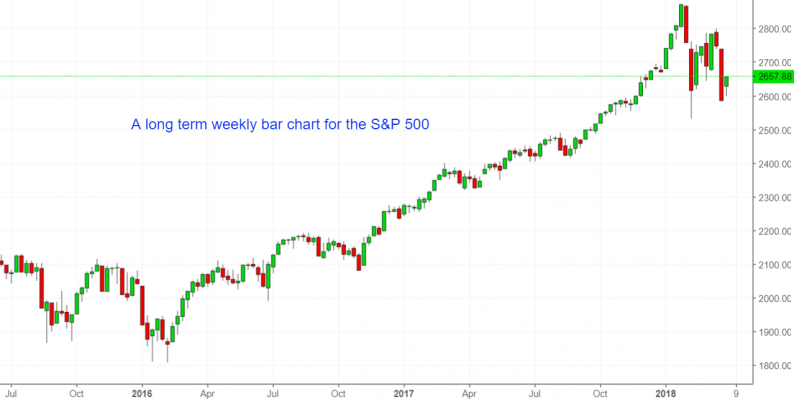Traders and investors tend to look at a lot of different trading time frames and charts. Some will use intraday charts (hourly, 4 hour, 30 minutes, etc), most will use daily charts, some will use weekly charts, and a few will use monthly charts.
Different charts tell you different things. Longer term charts like weekly charts will give you a longer-term outlook on the markets, while intraday charts will give you a shorter term look at the markets.


Problems that traders and investors have with charts
Traders and investors tend to make 2 mistakes when looking at charts.
The first problem is that traders tend to look at many different times frames without making a clear distinction between them. They get confused with the time frame on these charts and mix up the signals.
For example, a day trader might short the market because the weekly bar chart is sending a bearish sign. This makes no sense. Bearish signs on weekly bar charts are LONG TERM bearish signals. They tell you nothing about the market’s short-term or intraday direction.
The second problem is that some traders and investors will only look at 1 level of charts. For example, medium-term traders will sometimes only look at the daily bar chart.
This is incorrect. Traders should always look at charts for 1 level above their time frame and 1 level below their time frame.
Hence, traders and investors should do 2 things:
Always look at 3 time frames and levels of charts
This is a concept that I learned from my earliest days in trading.











Leave A Comment